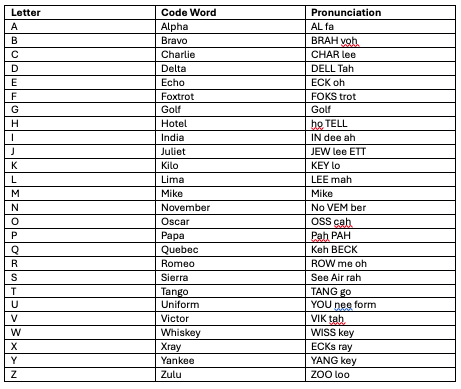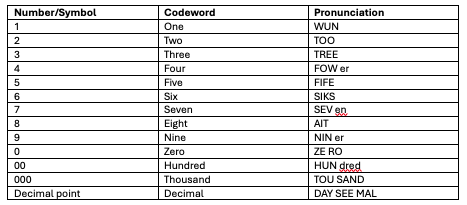The development of the modern phonetic alphabet for radio communication was developed and refined over the period from 1927 until 1965. Practical experience over both World Wars and subsequent conflicts involving voice radio communications have led to the final version used today, known officially as the NATO Phonetic Alphabet.
The phonetic alphabet consists of a collection of 26 code words, each representing a single letter of the alphabet. This system was devised and revised to ensure the use of the phonetic alphabet would eliminate any ambiguity during the passing of messages by radio (or telephone), and that the letters and numbers would be easily distinguishable from one another.
Over radio, the names of many letters sound similar, for instance “n” and “m”, “f” and “s” etc. Using the codeword for each letter improves readability in poor radio conditions.
The 26 code words of the phonetic alphabet are:
Alfa, Bravo, Charlie, Delta, Echo, Foxtrot, Golf, Hotel, India, Juliett, Kilo, Lima, Mike, November, Oscar, Papa, Quebec, Romeo, Sierra, Tango, Uniform, Victor, Whiskey, Xray, Yankee, Zulu

Emphasis is placed on the letters shown in capitals.

There are also codewords for numbers, to minimise miscommunication.
Number/Symbol Codeword Pronunciation
These code words are used today by amateur, aviation, marine and both civilian and armed forces.



Leave a Reply
Want to join the discussion?Feel free to contribute!